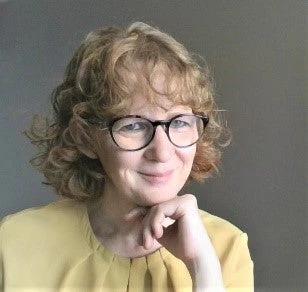Just one day after schools closed in Saudi Arabia to quell the COVID-19 pandemic, the country’s 6 million school children were able to access distance education in the form of recorded lessons on dedicated television and YouTube channels —an accomplishment made possible because of previous investments in distance education.
“In distance education, I have increased my love of researching information and solving problems in several ways, and I have further increased my self-reliance,” Saudi student
However, it was the decisions taken during the summer of 2020 that set Saudi Arabia on a journey described by one student as “breaking the fear of participation and error” and by one teacher supervisor as providing “an opportunity for everyone to educate themselves.” This was a journey that achieved a 93 percent satisfaction rate among parents (including 50 percent “very satisfied”) in the 2020–21 school year.
A new report chronicles the decisions made and analyzes the findings of a study of Saudi Arabia’s digital and distance education conducted by the World Bank and Ministry of Education in real time as the pandemic was unfolding. The study included nationally representative surveys of almost 18,000 students, teachers, school principals, supervisors, and parents, as well as virtual classroom observations, focus groups, and interviews.
Prioritizing student-teacher connections
One of the most important decisions was to prioritize student-teacher connections through a virtual school experience using a custom-built “Madrasati” (“My School”) platform containing a suite of tools for instructional planning and videoconferencing, along with books, educational games, virtual laboratories, test items, and more. Saudi Arabia’s accumulated experience in education technologies over the previous decade provided the capacity necessary to make this happen.
For children who needed additional support, options were provided for in-person school visits. The decision to require school principals to be present in school buildings and teachers to attend school one day per week gave a clear signal that schools were not closed to students but were accessible despite the predominantly distance modality. Overall, 98 percent of students logged onto the Madrasati platform at some point, more than 80 percent, on average, were logged on in any given school week.
Connecting to virtual school was not always easy, though, with 59 percent of teachers finding poor internet connections to be a main problem, and 67 percent finding it difficult to engage students throughout the lesson.
Providing tools for teachers, encouraging innovation
A second crucial decision was to provide teachers with high-quality tools to help them provide a virtual classroom experience with engaging learning content, encouraging them to innovate and share practice. Teachers were also exposed to model lessons and made use of popular education technologies. Each school had a designated e-learning focal point teacher, while supervisors helped to disseminate good practice
Focusing on change management and communication
Paying close attention to change management was a third significant decision. This included making sure all technical aspects of Madrasati worked seamlessly, with feedback loops embedded, a dedicated call center and integrated online live chat. A “Back to School” information platform was a one-stop-shop for parents, students, and teachers to access information for a successful e-learning experience. Around 80 percent of teachers and parents felt that the digital and distance education experience had led to closer relationships between students and teachers .
Perceived outcomes
The full impact of Saudi Arabia’s journey on student achievement has not yet been quantified by a comparable pre- and post-pandemic standardized assessment. However, most educators perceived the digital and distance education to be effective: 68 percent of teachers and 61 percent of school principals thought that students’ academic achievement was higher than in previous years. However, almost half of students, felt that they would have learned more if they could have returned to in-person schooling.
Most teachers perceived that students gained skills in digital literacy, independent learning, teamwork, and critical thinking . A lack of opportunity was perceived, though, for developing social skills, and some concerns were revealed over students’ feelings of isolation, and lack of social interaction with peers.
Looking at the experiences of other countries across the world would suggest that learning losses can be expected in Saudi Arabia despite the mitigation measures, along with a widening of inequalities with likely long-term consequences. For example, a recent World Bank analysis estimates around 14 percent of today's global GDP will be lost as a result of COVID-19 pandemic-related school closures.
A need to prioritize the youngest students
The experience of digital and distance education has been more difficult for Saudi Arabia’s younger students, as other countries have also found. Elementary-aged students were less likely to have their own device for learning. They were also more likely to feel that they would have learned more if they could have returned to in-person schooling (58 percent of elementary school students compared to 50 percent of intermediate school and secondary school students). As for elementary school principals, fewer believe that a blended education approach is effective: 33 percent of elementary school principals compared to around 53 percent of intermediate and secondary school principals.
Despite the many achievements of Saudi Arabia’s education response to the COVID-19 pandemic, most teachers, parents, and school principals wanted to see a return to in-person schooling as soon as possible (63, 72, and 75 percent, respectively). From early in the 2021–22 school year, vaccinated intermediate school and secondary school students have been back in schools, at least part-time. Until their return to school in January 2022, elementary school students had been learning full-time through digital and distance education, which means they have experienced some of the longest periods away from their teachers and classmates in the world.
The journey is not over
Saudi Arabia’s Ministry of Education recognizes the need to turn the successes and lessons learned into sustainable practices. For example, supporting disadvantaged and struggling students and reducing variability in teacher performance; the long-term strategy for blended learning needs to be purposefully planned; and all children and teachers need devices and connectivity.
Meanwhile, the strengthened communication, clarity of roles and responsibilities, focus on student-teacher relationships, and provision of tools and resources for teachers, as a result of the pandemic response, bode well for achieving the objectives set out in the Human Capability Development Program of Vision 2030 to prepare citizens for the challenges and opportunities of the future global labor market.





Join the Conversation